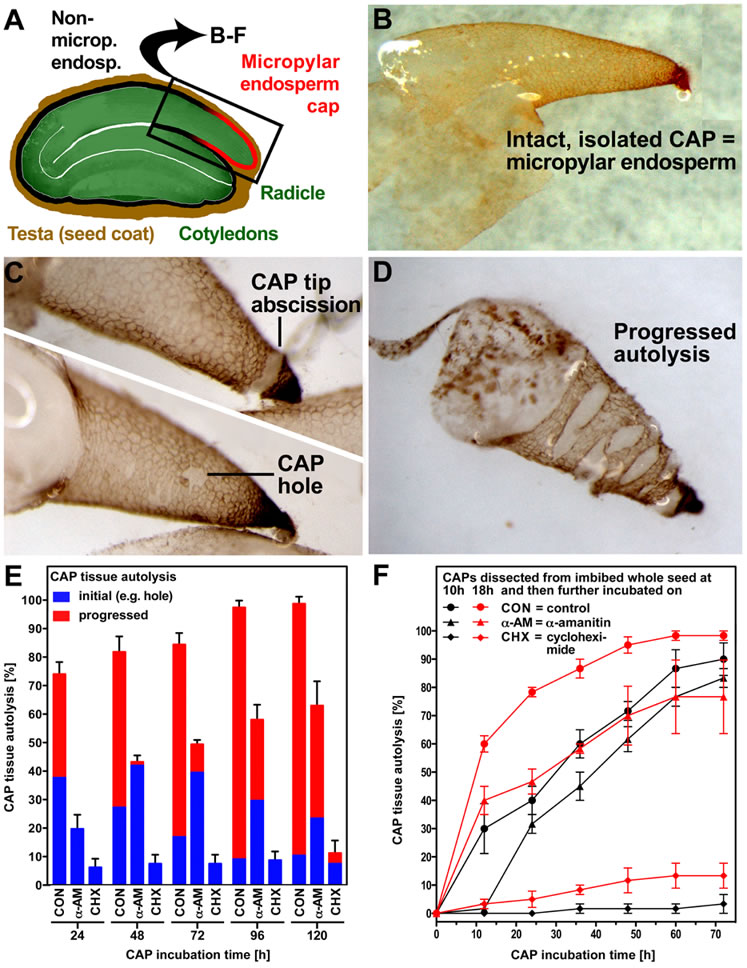Plant Physiology 155: 1851-1870 (2011)
Regulation of seed germination in the close Arabidopsis relative Lepidium sativum: A global tissue specific transcript analysis
University of Freiburg, Faculty of Biology, Institute for Biology II, Botany / Plant Physiology, Schänzlestr. 1, D-79104 Freiburg, Germany (A.L., Ke.M., K.O., G.L.-M.)
College of Life Sciences, South China Agricultural University, Guangzhou 510642, China (X.W.)
Department of Biological Sciences, Simon Fraser University, 8888 University Drive, Burnaby BC V5A 1S6, Canada (Ke.M.)
Received November 23, 2010; accepted February 7, 2011; published February 14, 2011
DOI 10.1104/pp.110.169706

Figure 2. The effect of transcription (α-amanitin) and translation (cycloheximide) inhibitors on the progress of autolysis in isolated CAPs.
A, schematic cross-section of a Lepidium sativum seed.
B, Isolated CAP (micropylar endosperm).
C, Examples of initial autolysis: CAP tip abscission (upper) and hole formation (lower).
D, Progressed autolysis.
E, The effect of inhibitors on the progress of autolysis in a population of CAPs isolated at 18h imbibition. Isolated CAPs were incubated for the times indicated without or with inhibitors (α-AM = α-amanitin; CHX = cycloheximide).
F, The effect of inhibitors on the progress of autolysis (initial + progressed lysis) in a population of CAPs isolated after 10 and 18 h of seed imbibition; subsequent incubation as indicated.
|
|
The Seed Biology Place |
Webdesign Gerhard Leubner 2000 |